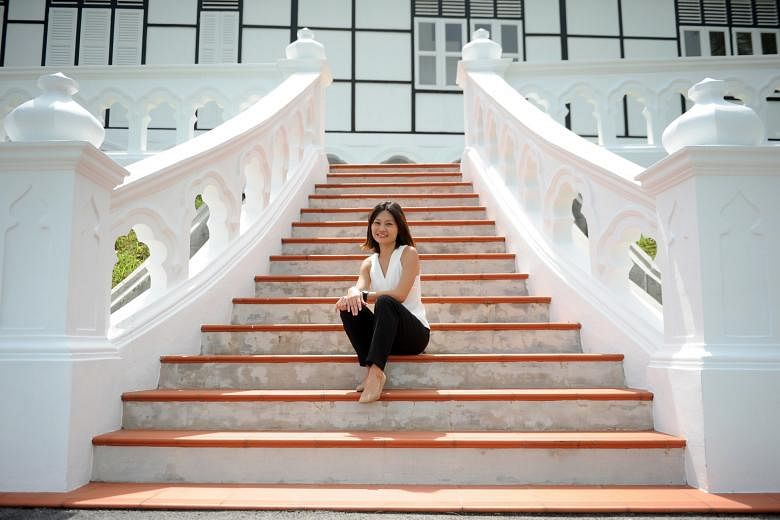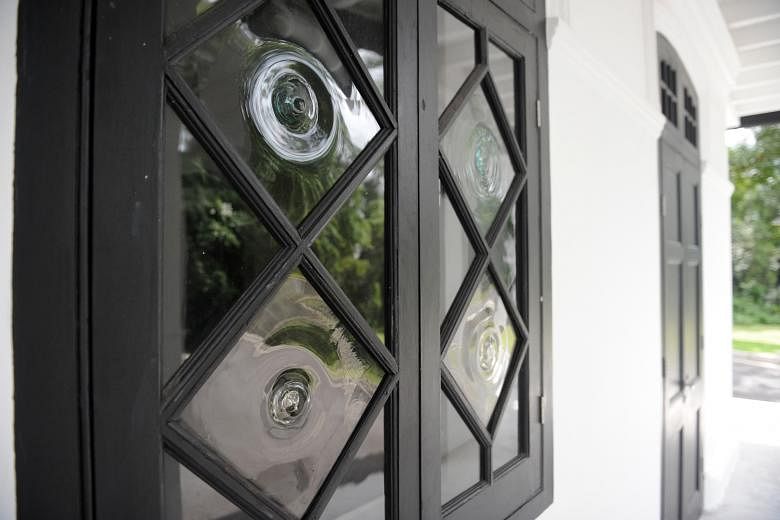Letting the light in: Panestaking work
Bats flew out of a dilapidated 1906 bungalow perched atop a hill, where they had made their home in the vacant No. 7 Gallop Road.
Next door, a black and white bungalow was similarly run down - termites had attacked its timber features, including the floorboards, roof structure and carriage porch.
Architect Loy Ju-Lin from the Urban Redevelopment Authority's (URA's) conservation team recalled how the bats started flying out of No. 7 when she first went in.
"The creatures had occupied the central room on the building's second floor, and there were bat droppings across the space," she said.
Ms Loy oversaw a two-year-long project to restore the two historic structures, which became part of the Singapore Botanic Gardens' new 82ha compound last month.
By 2018, No. 5 will house the new forest conservation interpretive centre while No. 7 will be home to the Unesco World Heritage Site's first natural art history gallery.
The buildings on rolling grounds were restored in 2011 and 2012 by SA Chua Architects. The URA documented the houses and guided the restoration work.
Ms Loy said the restoration process involved replacing No. 5's damaged timber structures and six of its tilted basement columns, as well as No. 7's damaged timber components.
The URA describes No. 5 as a "major milestone" in the development of the black and white style in Singapore. The 1898 house is the earliest known and oldest surviving black and white building here, according to the book Black And White: The Singapore House 1898-1941 by Mr Julian Davison.
The two buildings hark back to a time when the area featured large country estates owned by rich landowners. The Gallop Road area was often used as exercise grounds for horses. To create a sense of arrival, visitors would have to travel up a long winding carriageway to reach the homes.
The two newly-restored bungalows were developed by architect Regent Alfred John Bidwell, who also designed national monuments Raffles and Goodwood Park hotels.
No. 5's front carriage porch is influenced by gothic architecture. It also has a stairway and columns with Moorish ornamental features not usually found in black and white houses.
The glass windows of No. 7 were made using the 14th-century crown glass technique in which glass is spun into small panes. This results in the pane having a thick circle at its centre which looks like the base of a bottle.
Also known as Atbara, the 1,111 sq m house at No. 5 was owned by John Burkinshaw, a member of the legislative council who also established one of Singapore's oldest law firms.
In 1903, the house and its surroundings were sold to Charles MacArthur - one of the earliest chairmen of the Straits Trading Company. He built No. 7, a 1,270 sq m house known as Inverturret.
Both houses were bought by the Straits Trading Company in 1923, then leased to the French government for its embassy and ambassador's residence between 1939 and 1999.
Heritage experts welcomed the move to open up the relatively private space to the public.
Heritage law expert Kevin Tan said: "These buildings are very old and historically significant. They add value to the Gardens and make it even more desirable for visitors to want to stop by."



